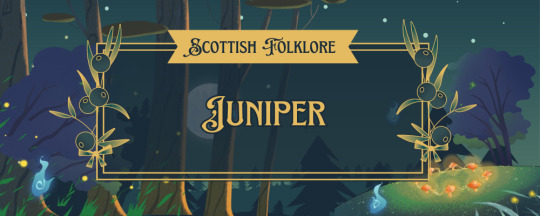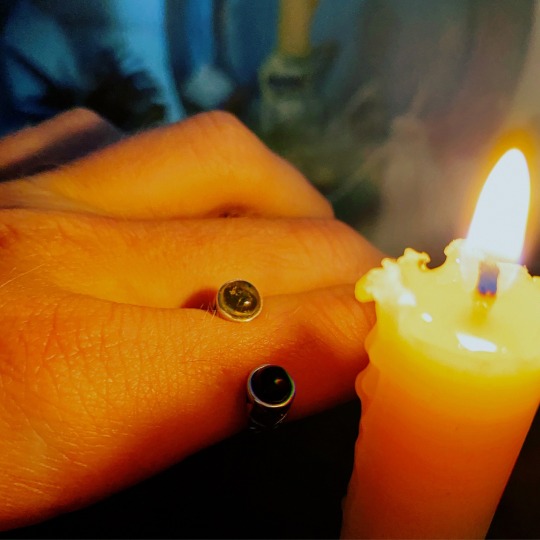#Saining
Note
apologies if this question doesn't really make sense. i am wondering about the meaning of the words hallowed, blessed, and consecrated. my understanding of consecration is it involves purifying an item then imbuing it with a purpose, instructions, 'intent'. would this object hypothetically then be 'hallowed'? or do these words mean something different?
The question makes sense to me.
Historically and linguistically speaking, these words are all interrelated, and even treated as synonymous, so the answer to this question would likely be a little different depending on who you ask. As such, I can only speak to how I use these words in my own personal notes and writings (though I am not as picky about how I use them online.)
Your definition of a consecration is actually a pretty good overview, but it's that intent you mention that specifically makes it a consecration to me. When I consecrate something, that generally entails me devoting something to a particular purpose, entity, or force.
When I use the word "hallow," however, it speaks more to sanctifying something. When I hallow an object, I am taking something mundane and rendering it sacred through ritual and will.
When I use the word "bless," it generally encompasses the act of hallowing, but also includes the weaving of a small cantrip to promote propserity and/or protection.
A word you didn't mention here, but which I think is probably worth mentioning is "sain." When I use this word, it is usually to describe the act of ritual cleansing. Accordingly, if I am saining something, I am purifying it for ritual purposes—often for the sake of hallowing and/or consecration.
81 notes
·
View notes
Text
The Scottish Folklore of Using Juniper Smoke to Sain

Within historical Scottish folklore, juniper (also called: mountain yew, Iubhar-beinne, or aiteal) is often mentioned as being protective against supernatural forces, which is why it is one of many ways someone might sain(cleanse or protect) people, places, or things. However, when gathering juniper, you weren’t supposed to take a clipping, but instead pull up the whole plant. For obvious environmental reasons, I have to strongly advise against murdering a slow-growing (and endangered) protected plant.
“This plant is a protection by sea and land, and no house in which it is will take fire. It must be pulled by the roots, with its branches made into four bunches, and taken between the five fingers…-“
“The History of Witchcraft in Europe” by Various Authors
You would want to smoke to drift over whatever it is you are trying to sain, so where you burnt them was very important. As well as that, on certain festival days, sains were thought to be more powerful(such as a quarter day), so people would be very likely to partake in juniper saining on those days.
"A fire was kindled in each byre on Christmas morning, and in parts of the country the byres were purified by burning juniper in them."
“Notes on The Folk-Lore of the North-East of Scotland” by Walter Gregor (1881)
Since the cleansing and protective effects were believed to fade, it was often redone several times throughout the year.
While likely not great for people with raspatory problems, smoke does have some science-backed benefits. The oil in juniper is antibacterial and antifungal, while the smoke itself is antibacterial, can help kill/dry out mold, can help keep away insects(including harmful ones, such as ticks, and house-munching ones, such as carpenter ants). This could be part of the reason that smoke finds it’s way into cleansing rituals around the world. Despite these benefits, it is harmful to breathe in any kind of smoke, so please keep that in mind.
One final (but less mentioned) use for juniper was boiling the juniper, and using the water to sprinkle on cattle.
“When a contagious disease enters among cattle, the fire is extinguished in some villages round; then they force fire with a wheel, or by rubbing a piece of dry wood upon another, and there with burn juniper in the stalls of the cattle, that the smoke may purify the air about them; they likewise boil juniper in water, which they sprinkle upon the cattle this done, the fires in the houses are rekindled from the forced fire.”“
Observations on the Popular Antiquities of Great Britain: Chiefly Illustrating the Origin of Our Vulgar and Provincial Customs, Ceremonies, and Superstitions, Volume 1.” by John Brand
#juniper#lubhar-beinne#aiteal#juniper saining#juniper sain#saining#sian#sain#sianing#juniper smoke#scottish folklore#scottish mythology#folklore#scottish witchcraft#Folkmagic
69 notes
·
View notes
Text

It's coming!
June 20th!
Check out my Patreon for a pre-check on the items being listed in the store and in the mystery Capsule grab bag!
#witchcraft#witchblr#witch community#witchcore#witch business#etsyhandmade#etsysmallbusiness#etsy#etsyseller#etsysale#patreon#mystery#mystery capsule grab bag#mystery witchy confetti#witchy things#witchy jewelry#witchy vibes#witchy#moon water#suncatcher#Saining#saining incense blend
3 notes
·
View notes
Text
the urge to get a juniper bundle to sain with bc that scottish pride is running deep and i want to connect with traditional scottish folk magic
34 notes
·
View notes
Text
just sharing this lovely article about Scottish Saining
23 notes
·
View notes
Text
I Don't Think Saining Water is Meant for Consumption by Cats
I just caught my cat Aidan drinking the last bit of remaining water from my Saining bowl. I did a ritual for a friend of mine this evening, and as I always do with any kind of Saining ritual, I combign Fire and Water to increase the strength of the blessing and the protection of this rite.
I got so caught up with aiding my friend with this evening's ritual that I forgot to clean up the tools after the fact. When I came to collect my Saining bowl, I found Aidan drinking what water was remaining at the bottom of the bowl. At least he didn't eat any of the offerings I left out for the duration of the ritual. I guess you can say that Aidan is also blessed and protected. I'm totally bemused by this situation.
4 notes
·
View notes
Text



Collected my first crop of mugwort this year!
I grew these babies from a seed and I know they'll definitely make great saining sticks/tea!
7 notes
·
View notes
Text

There’s something special about this combination; zoetic and thanaturgic. Atavistic. Primordial arboreal blood and flesh, immortalized. Dual natured, like our craft.
This’ll be used as a protection as well as in the creation of menstruum for saining rites.
#amber#jet#silver#ring#silver ring#amberandjet#amber and jet#magical jewelry#witch jewelry#occult jewelry#saining#sain#Celtic#magic#magick#folklore#folk magic#animism#traditional witchcraft#traditional craft#tradcraft#witch#witchcraft#witches#magick ring
2 notes
·
View notes
Text

mugwort bundles
#also contains rosemary and wormwood and chia#incense#mugwort#magick#saining#green witch#witchcraft#earthy decor#plant magic#mugwort magic#smudging#smoke cleansing
2 notes
·
View notes
Text
aining is the Scottish Folk magic act of purification. It’s similar to the idea of smudging but very different. Importantly it’s a cultural relevant practice and is one available for folks who work within the Scottish folk magic diaspora. There has been a lot of conversation around appropriation of certain practices across the world by westerners. A lot of people using White Sage to smudge is a great example of this. There is a lot of, I think entirely appropriate, back lash and anger from Native American people and others to stop folk using Sage to smudge in their efforts to purify their spaces. Others cite the over harvesting of the plant in the wild and other issues caused by the commodification of these native practices by predominately white western Capitalists eager to cash in on the latest white person trend adding to it becoming problematic.
There are a number of articles written about alternatives to this practice of smudging with sage aiming to help people explore more appropriate alternatives. Below you’ll explore the practice of purification, known as Saining, from a Scottish Folk Magic point of view. Please note I share this information for people who wish to explore purification from within Scottish folk magic practices. These practices are culturally specific. I hope those with Scottish Heritage might find these practices useful. I hope those without Scottish heritage will be encouraged to explore the different ways these purification practices work from their own cultural point of view.
Why Sain?
Saining practices are important but why did Scottish folk magic practitioners carry them out? Saining practices, similar to smudging, were carried out primarily to remove influences of negative spirits on people, places, objects, and livestock. Note, these aren’t “energy cleansing” practices it also doesn’t equate to removing sin.
Purification practices are there to remove influences from being overlooked or to remove unwanted spirits influencing the person or the environment. Carrying out Saining helps us to uphold principles of living within the right order of things, alongside this is being diligent in your work, hospitality, keeping an orderly house and being true to our word.
Scottish Folk Magic is Syncretic and Animistic
Just to note Scottish folk magic practice is highly syncretic. It’s how the information and practices survived throughout the different cultural influences impacting them. I have no problem with the syncretism but others might find some elements of the practice too focussed on an Abrahamic point of view.
Due to the syncretic nature of Scottish Folk magic Saining incorporates the idea of making the sign of an equal armed cross though drawn X in fashion and not + linking it to these patterns in Celtic art. The Etymology of the word Sain is worth noting. Sain comes from Middle English (whence also English sain) and is found in the Scots language as Sain. Cognate to the Scottish Gaelic word Seun (“a charm”). Sain can mean to bless or consecrate and make the sign of the cross. Seun covers a charm for protection, protection in general and also prosperity and fortune. To Seun/sain an object you utilise the sign of a cross or say a protective charm said over an object or both to hallow it and to awaken it to purpose aimed at protecting your prosperity.
Scottish Folk magic practice is animistic – everything has a spirit. Water, plant, person, house etc. When we use a practice to put purification “at a person”, we are asking the spirit to awaken and help us to help remove the unwanted influence “at them”. Here we can already see an issue with items brought that you don’t know the providence of. How do we know the proper call and request protocols, or relevant respect and charms sung, when harvesting the items for use? If the spirit of the object isn’t willing the action of employing it in itself is not enough. You’re basically wasting your money on empty gestures.
Different purification practices, using different components from the natural world, appear throughout Scottish Saining practices and can be performed over land, livestock, around a person or a whole community as required. Activities to purify a community are of course orders of magnitude larger than those for a person as you can imagine and would usually occur at the quarter day festivals.
[read more...]
#saining#smoke cleansing#witch tips#pagan tips#witchcraft#saining with smoke#saining with fire#saining with water
1 note
·
View note
Text
Okay.
So, I was researching about Scottish folk practices when I stumbled upon a reddit thread about smudging. Specifically, OP was wondering if they could practice smudging if they grew their own sage. The replies were surprisingly positive and supportive.
Now, my own take on this may be controversial: if you practice anything from a culture not your own with good intentions and a pure desire to learn the old ways as they are taught within that community, rather than a bastardized white-washed version of it, then I think that's good. Admirable in some cases. If certain traditions aren't taught to someone–anyone!–those traditions are certain to die out. And if someone is approaching those traditions in good faith and deep respect for that culture, then why not teach them? And directly from the source so that they may learn better, as opposed to playing telephone with outdated or romanticized books. That's my personal take.
But within that thread, I saw this reply:

And something rubbed me the wrong way about they said "my ancestors used to sain (their term for smoke cleansing)". A few things rubbed me the wrong way, actually.
First, let's clear up what saining means and where it comes from.
The Cailleach's Herbarium talks about saining in an excellent article, link here, that mentions the meaning of the word sain: "The etymology of the word Sain is worth noting. Sain comes from Middle English (whence also English sain) and is found in the Scots language as Sain. Cognate to the Scottish Gaelic word Seun (“a charm”). Sain can mean to bless or consecrate and make the sign of the cross."
They go on to explain that saining can take many forms, such as the traditional smoke cleansing, fire cleansing (as is seen in many Celtic traditions and myths), and water cleansing (or lustration).
Basically, sain is a charm, usually used for protection and cleansing. It is not truly comparable to smudging, a term commonly associated with Native American traditions. And even that term is an English word dating back to the 16th century: "The smudge meaning "make a smoky fire" is by 1860, also of unknown origin, but perhaps related. According to OED now dialectal and North American. OED also gives it in an earlier, obsolete sense of "to cure (herring) by smoking" (1590s).The related noun smudge is attested by 1767 as "a suffocating smoke" (to repel mosquitoes, etc.); from 1806 as "heap of combustibles ignited and emitting dense smoke." Hence smudge-pot (1903). Smudge-stick as a Native American (Crow tribe) artifact is by 1908"
...which doesn't clear anything up about its origins, really. The smoke purification practices of the Native Americans is varied depending on tribe and their individual beliefs, with words that also vary by language and dialect. Basically, smudge is an English catch-all term for smoke purification processes...which is why I have to laugh when people split hairs over the use of the word, assuming it applies to all Native Americans, which, frankly, is also an English catch-all term for the numerous tribes of indigenous peoples in North America.
Some people are perfectly comfortable conflating one term with a whole ass practice and holding that as the be all end all term for said practice, while on the other hand, those same people will take a word for a very specific thing, and use that as a a catch-all term for contemporary practices to the other word. At best, it's confusing as fuck. At worst, it's muddling not one, but TWO similar yet still very different cultural practices.
In fact, I'll take it a step further: if you follow a Native American tradition or spiritual path, try to learn what the specific word is for your smoke purification ritual(s), and start using that word (if you are allowed within your practice) in lieu of the term "smudging". That goes for other practices that take part in smoke purification. Own your culture, own your traditions! Don't dumb down your practice for the sake of outsiders who don't care or fully understand those practices. You deserve better. Your fellow practitioners deserve better. Your culture deserves better. The ancestors who laid the groundwork for these traditions deserve better. Honor yourself, honor them all.
#Scottish witchcraft#Scottish folk magick#Scottish syncretism#Scottish animism#Sain#Saining#Gaelic Polytheism
5 notes
·
View notes
Text
Scottish Folklore: Salt and Sin Eaters 🧂💀

Customs that use salt for protection or purification are almost found world-wide, and that includes Scotland. It was so seriously thought of, that salt(sometimes in a chamberpot) was a necessary wedding gift, and salt was to be the first possession that was moved into a new house.
“At a ‘flitting,’ the first thing moved into the new house was commonly the salt-box, and salt was catered ‘for luck.’ again, in St. Kilda, when the cattle were moved from one pasture to another, they were sained with salt, fire, and water.”
“The Silver Bough: Volume 1” by F. Marian McNeill (1957-1968)
One of the reasons salt was so relied upon was it’s protective possibilities against fairies. For example, some fairies would not except gifts of food if they had salt (though others would), and thrown salt could cleanse an area as an offering.
“Till quite lately, fishing on the Tweed was believed to be influenced by the fairies of the river. Salt was thrown into the water, and sprinkled on the nets to insure a plentiful catch of fish. This was really the offering of a sacrifice to the river-spirits.”
“Folklore Of Scottish Lochs And Springs” by MacKinlay, James M (1893)
It is common for fairies to share an association with the dead, and the folklore of salt is yet another example of a saining item that could be used for either.
DISHALOOF, n.
1. “A former practice, in blessing a corpse, of the attendants putting their hands in the three empty dishes placed on the hearth near the body, and repeating the rhyme of saining, beginning thus: — ‘Thrice the torchie, thrice the saltie, Thrice the dishes toom for loffie’”
Rxb. 1923 Watson W.-B., obs.
After the body of a dead person was properly cared for, a plate of salt was often placed upon the dead persons chest. It was this salt that Sin-eaters would partake in.
Sin-eaters were people who were paid to take in the sin of the dead into themselves(hence, sin-eating) and therefore clearing the dead person of sin.
“Of the curious custom of “sin-eating”—that is, the placing of a piece of bread upon the salt by a recognized individual known as the sin-eater, who, for money reward, at the same time partook of it, thereby, as it was believed, absorbing to himself all the sins of the deceased—there is little to be gleaned in this district.”
“Witchcraft and Superstitious Record in the South-Western District of Scotland” by J. Maxwell Wood (1911)
Since those sin-eaters would be taking in the sins, they were seen as having be “full of sin,” and would be shunned by society.

Note:
Need more quotes and sources? I have some extra ones on my website post(at the bottom).
#scottish folklore#saining#sain#scottish mythology#scottish myths#folklore#mythology#fairy#fairies#scottish#fae#scotland#scottish customs#history#customs#sin eaters#death#dead#folk magic#Folkmagic
14 notes
·
View notes
Text
Style test

thank you for everyone who have something nice to said about my saint design - that meant a lot to me
( reblogs is very appreciated )
#cat#artists on tumblr#rainworld#rw#rain world#slug#slugcat#scug#slug cat#survivor#?#slugcats#doodles#rw vanilla#rw downpour#doodle#slugpup#slug pup#slup#sluppy#saint#the sain#rw the saint#rw saint#rainworld saint#rw art
602 notes
·
View notes
Text
Happy 1 month anniversary round 6 🥳
#alien stage#alnst#에이스테#alien stage ivan#alien stage till#alnst ivan#alnst till#ivantill#round 6#vivinos#gay men#doomed yaoi#im saine guys#edit
171 notes
·
View notes
Text

Édouard Sain (French, 1830-1910)
Portrait d’une jeune femme
164 notes
·
View notes
Text

"I go back with my manager 25 years. I was 15 and she took a chance on me." -Sebastian Stan about his Manager, Emily Gerson Sains








All Emily and Sebastian pics from @mrs-stans tumblr
First head shot from Sebastian's IG, I think. I found it on Google.
134 notes
·
View notes